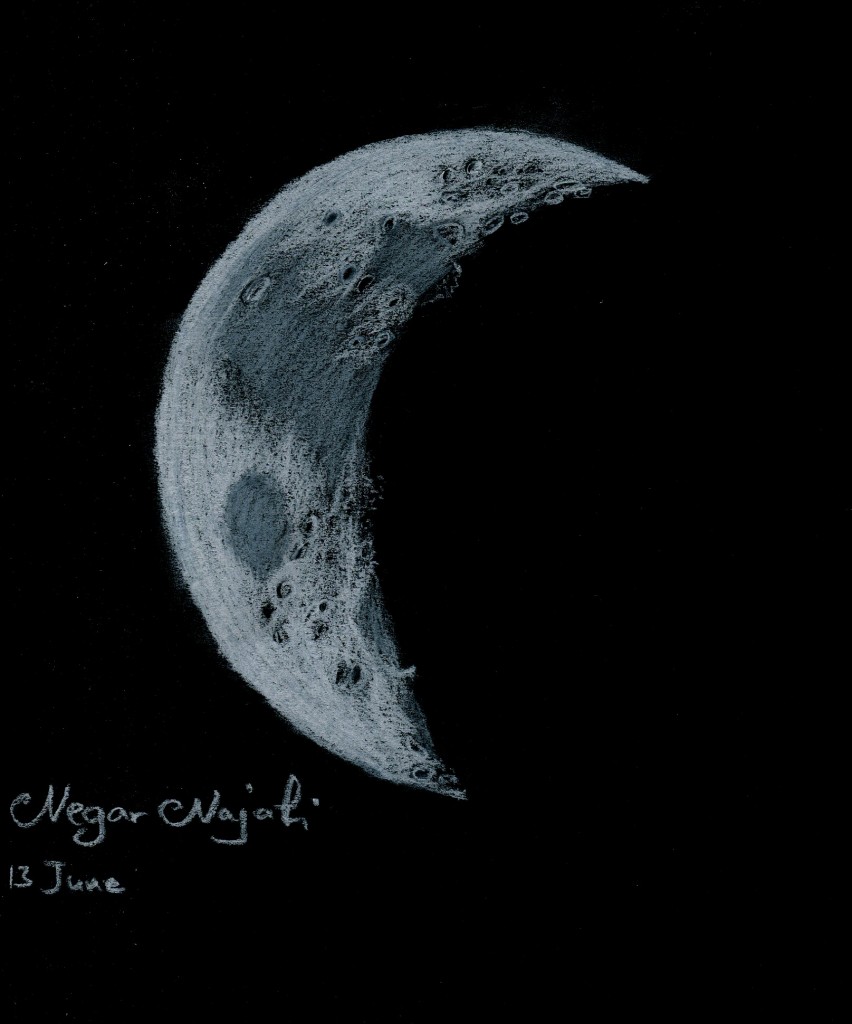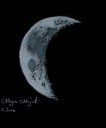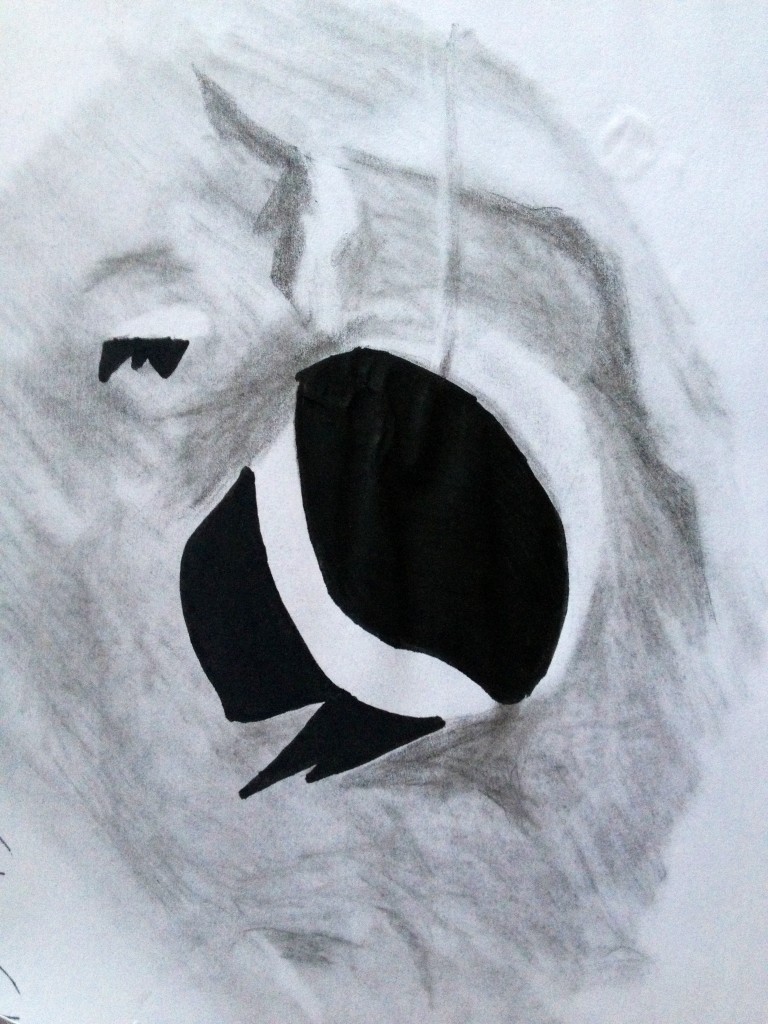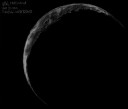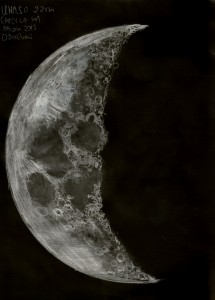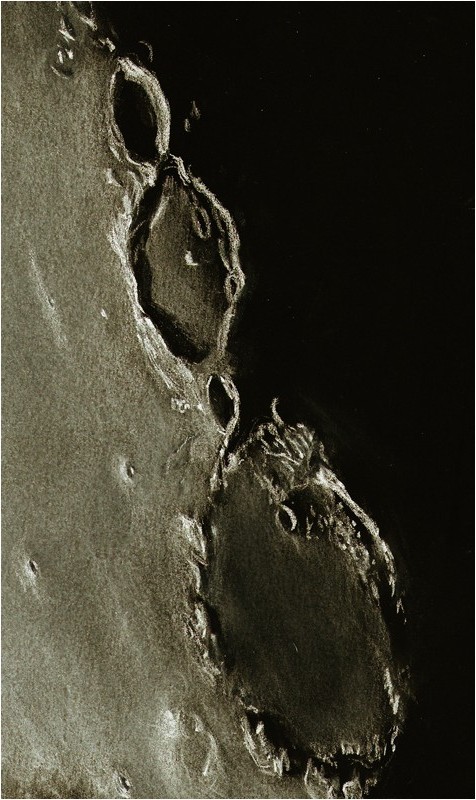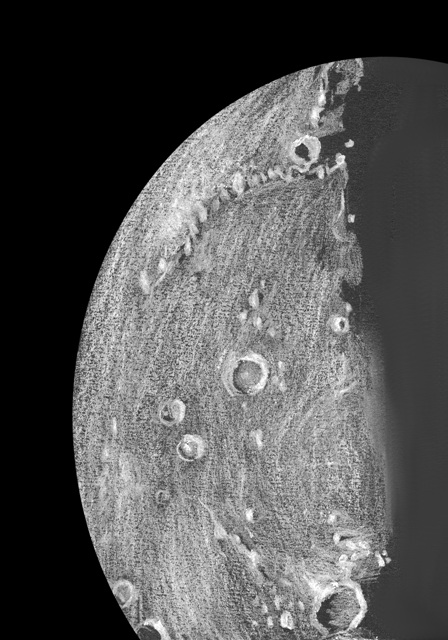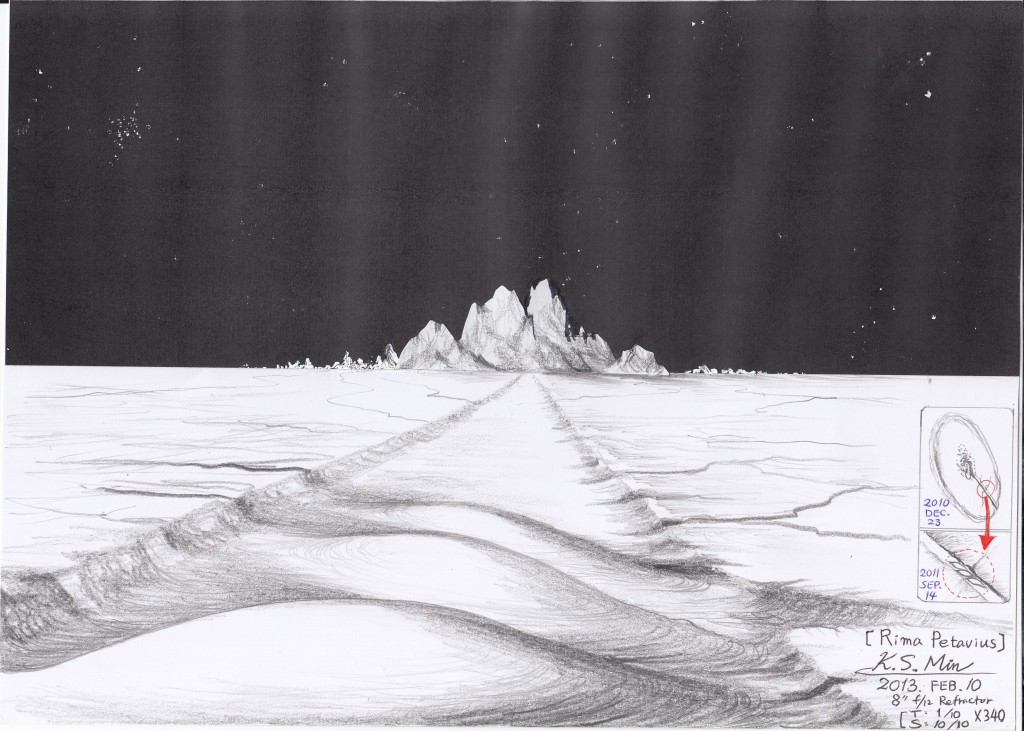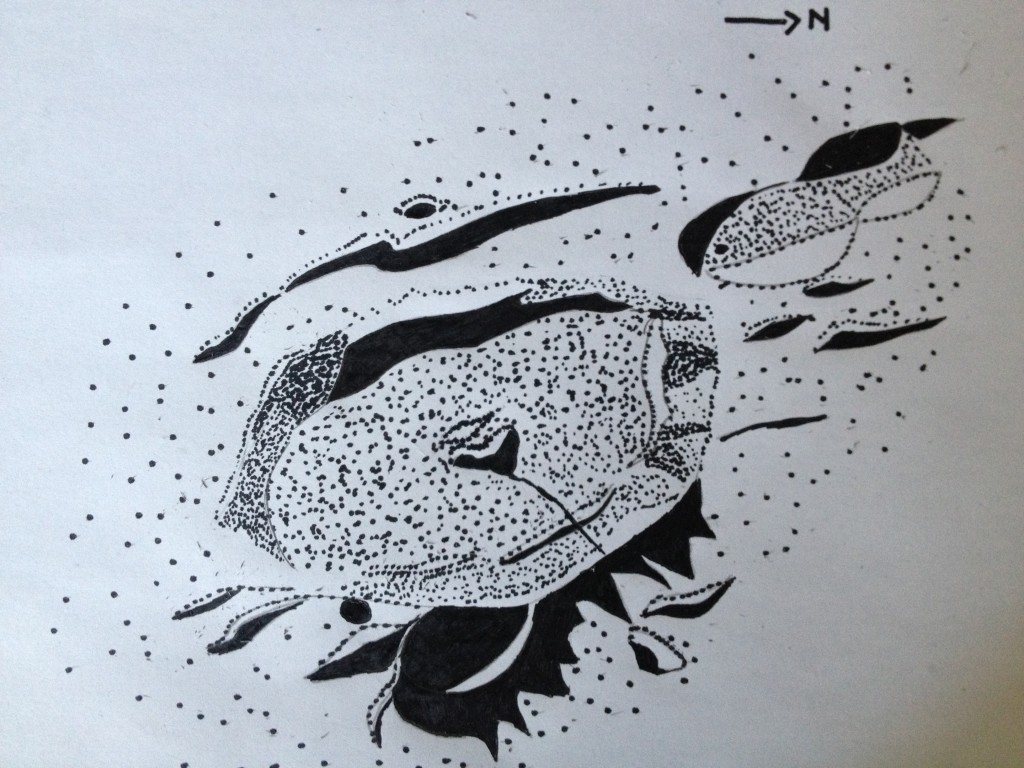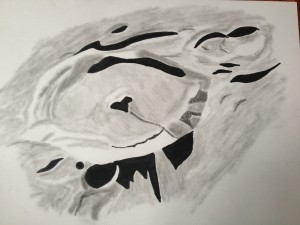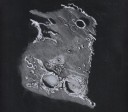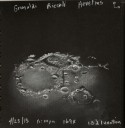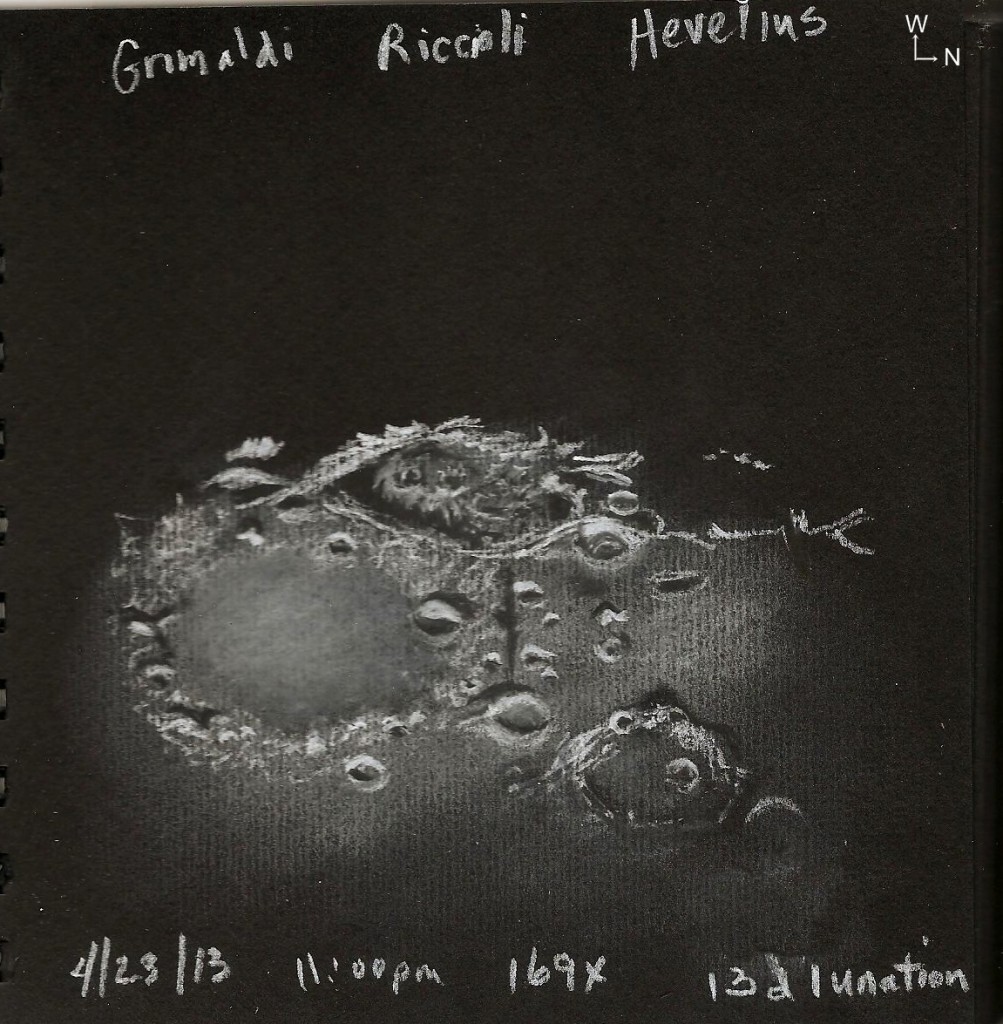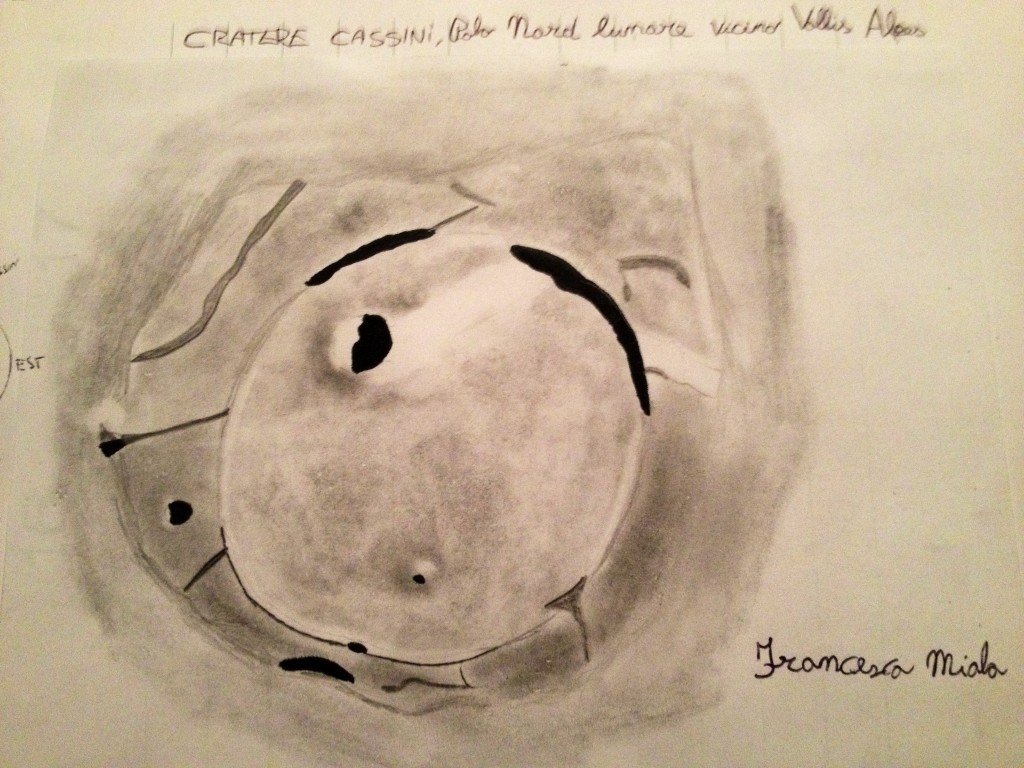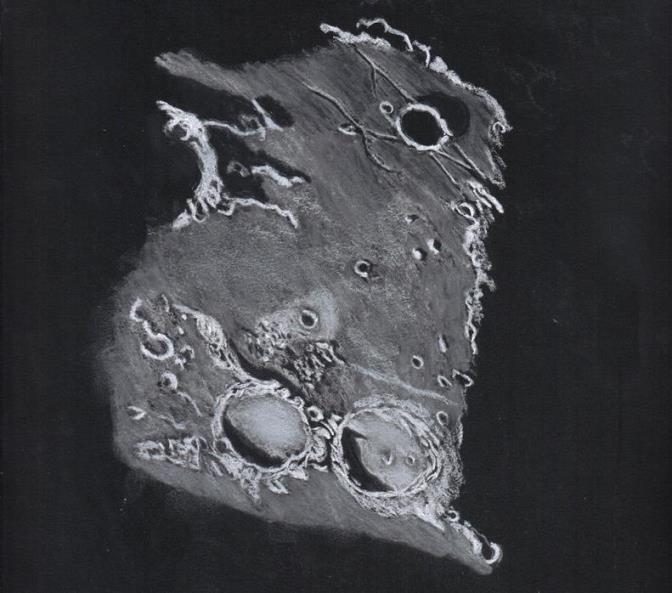
Craters Mercator, Campanus and Ramsden
Move cursor over image to view labels.
After another canceled public telescope viewing Friday evening due to thick clouds and light snow, I was pleased to see a nice Saturday filled with sunshine followed by a clear night.
With no particular sketching targets in mind, I scanned the terminator for interesting sketching targets and stopped when I could see sunrise at Ramsden (26 km.) along with all those crisscrossing rimae (rilles).
Northeastward away from Ramsden and across Palus Epidemiarum, I also added two additional ancient craters Mercator (49 km.) and Campanus (49 km.).
This break in our poor Chicagoland spring weather was long overdue.
Sketching:
For this sketch I used: 400 series black Strathmore Artagain paper 9″x 9″, white and black Conte’
pastel pencils , and Conte’crayons, a blending stump, plastic eraser.
Telescope: 10 inch f/5.7 Dobsonian with 6mm (241x)
Date: 4-21-2013 01:00 – 02:45 UT
Temperature: 7.2°C (45°F)
Weather: clear, calm
Seeing: good Antoniadi II-III
Co longitude: 35.4°
Lunation: 10.6 days
Illumination: 74.1%
Frank McCabe
